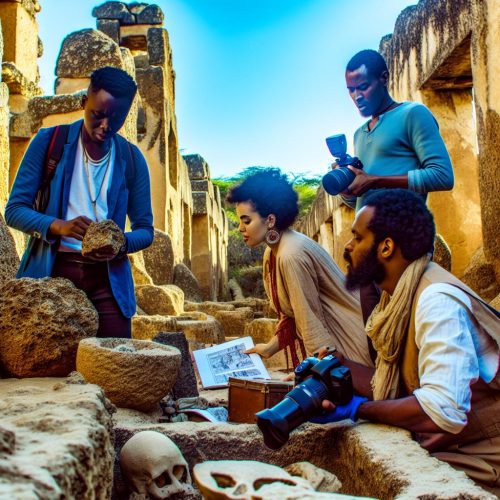Introduction to the Gedi Ruins
The Gedi Ruins, situated on the captivating northern coast of Kenya, serve as a remarkable portal into the Swahili culture and history. These ancient ruins, believed to trace back to the 13th century, offer an intriguing glimpse into the architectural prowess of a historical town that would later become an enigma following its puzzling abandonment in the early 17th century.
Historical Significance
The Gedi Ruins hold an essential place in the history of the East African coast, presenting evidence of a bustling community that significantly contributed to the expansive Indian Ocean trade network. The archaeological discoveries from the Gedi Ruins, such as exquisite Chinese porcelain and elegant Venetian glass, signify that the residents of Gedi were not isolated; they engaged in extensive commercial exchanges with distant lands spanning Asia and Europe. These artifacts are testimony to the rich tapestry of cultural interfaces and interactions that were characteristic of the East African coastal regions during that era. Such historical interactions illustrate the cosmopolitan nature of Gedi, highlighting its role in the larger narrative of global trade and cultural exchange.
Architectural Features
Upon exploring the Gedi Ruins, a spectrum of unique and historical structures unfolds before visitors, including a large mosque, several elaborately designed residential complexes, and a stately palace. These structures were primarily constructed using coral stone, a material that reflects the innovation of the Gedi architects. The Gedi Ruins’ architecture showcases a harmonious blend of Swahili, Arab, and Persian design elements, representing the fusion of various cultural influences. The intricate carvings and decorative plasterwork adorning these buildings underscore the aesthetic sophistication and high degree of craftsmanship possessed by Gedi’s builders. Such architectural prowess not only highlights the technical skills of the people but also the cultural and artistic expressions prevalent at the time.
Archaeological Discoveries
The archaeological findings at Gedi are bountiful, offering invaluable insights into the daily lives and routines of its historical inhabitants. Among these discoveries are beads, coins, and pottery, each acting as a vital source of information regarding trade practices and everyday activities of the Gedi community. The diversity and variety of these artifacts reveal the extent of the economic activities that were central to Gedi’s society. Beads suggest intricate trade networks and perhaps domestic production or specialized craftsmanship. Coins provide evidence of the economic transactions and the monetary systems in place, hinting at Gedi’s inclusion in broader trade routes. Pottery, often locally produced and sometimes imported, conveys information about the dietary habits, storage practices, and aesthetic preferences of the town’s people. Collectively, these archaeological artifacts are crucial for understanding the social and economic status of Gedi during its peak, unfolding narratives about a thriving town engaged in multifaceted interactions and exchanges.
Preservation and Tourism
In contemporary times, the Gedi Ruins are preserved as a national monument, with their protection entrusted to the National Museums of Kenya. Dedicated efforts are in place to maintain the integrity of the site while simultaneously promoting it as an educational tourism destination. Visitors to the Gedi Ruins are given a unique opportunity to explore this historical site, gain insights into the Swahili coast’s rich historical and cultural narrative, and appreciate the dynamic history of interactions that shaped the region. Educational tourism at Gedi not only helps in raising awareness about the historical importance of the site but also aids in generating resources that contribute to its preservation and continuous study.
For those interested in delving deeper into the rich history and culture of the Swahili coast or planning a visit to the Gedi Ruins, further information can be accessed via the official National Museums of Kenya website. Here, potential visitors can find additional resources, including logistical details about visiting this fascinating historical site.
